Earth Science and Engineering
Reconstructing the Red Sea’s climate patterns
An advanced numerical model is helping researchers better understand the variability of the Red Sea’s climate patterns.
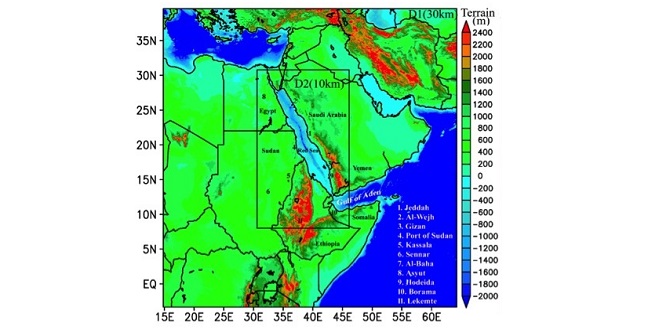
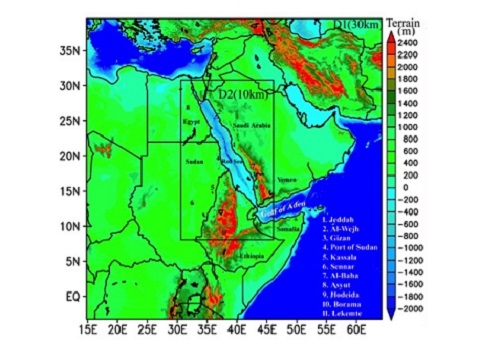
The researchers’ analysis covered a rectangular-shaped area around the Red Sea.
Reproduced with permission from ref 1© 2016 John Wiley and Sons.
Red Sea climate data covering the period between 2000 and 2014 has been reconstructed highly accurately at smaller time and space intervals than ever before by KAUST researchers, who used an advanced numerical weather modeling system that incorporates all weather data from the region1.
The system, called the Advanced Research version of Weather Research and Forecasting (WRF-ARW), was developed by the United States National Centers for Environmental Prediction to reconstruct and forecast weather data based on current conditions.
Ibrahim Hoteit, Associate Professor of Earth Science and Engineering at KAUST, and his colleagues took advantage of the advanced computational facilities at the University to customize the system and generate high-resolution regional climatic data covering relatively small timescales and geographic areas over the Red Sea. To do this, they combined low-resolution global reconstructed climatic data covering relatively large geographic areas and timescales with available satellite and in situ observations over the region.
“The study generated and validated much-needed high-resolution atmospheric and wave datasets for the Red Sea and adjoining region,” noted Hoteit. “These high resolution datasets more accurately describe the regional climatic features of this region than available global products.”
The model revealed that the maximum temperatures in the summer months are in north Sudan and the central Arabian Peninsula. In the winter, the maximum temperatures are found in the Tokar region, a 110-kilometer-wide valley located approximately in the middle of the African side of the Red Sea.
The model also clearly shows the evolution and duration of the Red Sea Convergence Zone and the conditions that favor its intensification. In the winter, tropical and extratropical wind systems converge in this zone in the middle of the Red Sea, leading to localized cloudy skies and drizzle in an otherwise largely cloud- and rain-free area, explained KAUST Research Scientist Hari Dasari, the lead author of the study.
The research highlights the utility of the WRF-ARW for producing high-resolution data in the Red Sea region that can further help in understanding Red Sea circulation, its ocean surface processes and marine biodiversity, the researchers say.
The team is currently working on minimizing uncertainties in the model’s predictions and improving the quality of the generated data sets. They are also developing new higher-resolution datasets covering longer time periods for the entire Middle East region.
In addition, the researchers are using the model to study some extreme events that recently affected Saudi Arabia, such as the Jeddah floods of November 2009 and January 2011 and the Mecca storm of September 2015, with the aim of assessing their predictability. They also plan to build a seasonal prediction system of the atmospheric circulation over the Saudi Arabian peninsula.
References
- Viswanadhapalli, Y., Dasari, H.P., Langodan, S., Challa, V.S. & Hoteit, I. Climatic features of the Red Sea from a regional assimilative model. International Journal of Climatology 37, 2563-2581 (2016).| article
You might also like
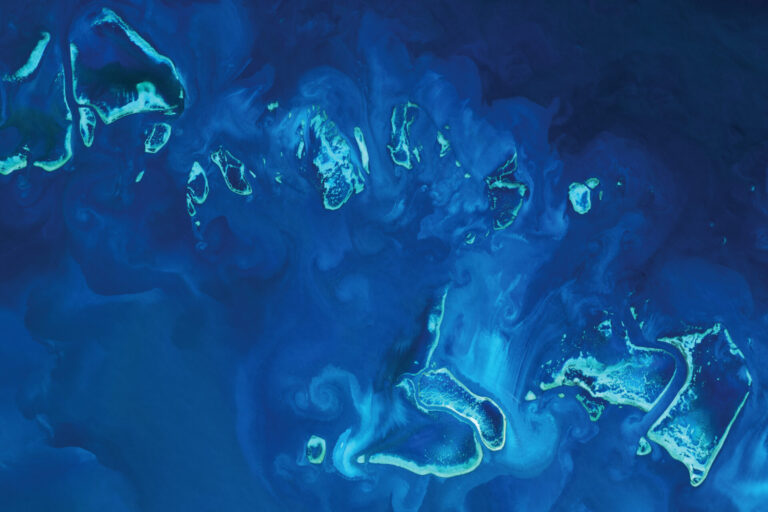
Earth Science and Engineering
Sensing color cues to monitor coral health in the Red Sea

Earth Science and Engineering
Kahramanmaraş earthquake study showcases potential slip rate errors

Chemical Engineering
Unveiling the role of biomass-burning aerosols in atmospheric reactions

Earth Science and Engineering
Feeling the heat across the Middle East
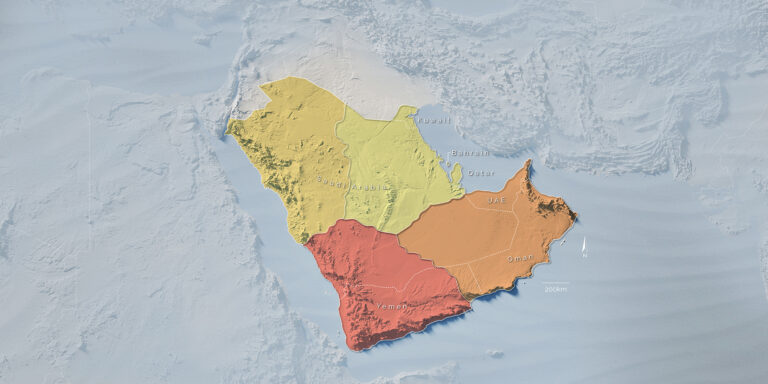
Applied Mathematics and Computational Sciences
Past and future drought patterns across the Arabian Peninsula
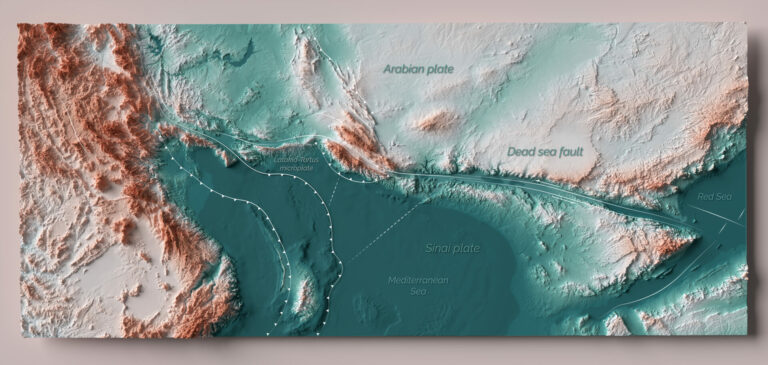
Earth Science and Engineering
Fewer major earthquakes for the northern Dead Sea Fault

Applied Mathematics and Computational Sciences
Measuring the impact of desert greening

Applied Mathematics and Computational Sciences



